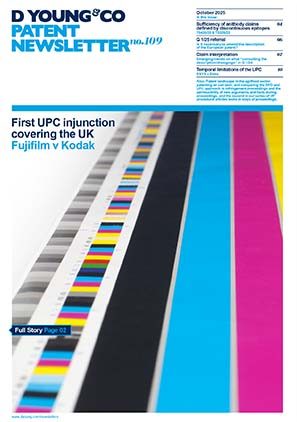The engine of precision farming: AI and agritech at the EPO
Precision farming is a rapidly growing area of technology likely to prove increasingly critical for a world needing to feed more people, more sustainably, and with fewer resources. It uses technology to precisely measure and respond to environmental conditions at a highly localised level, thereby enabling inputs such as water, fertilisers and pesticides to be accurately tailored based on crop requirements rather than applied intensively and uniformly over large areas of farmland. This helps increase yields while alleviating the waste, soil degradation and environmental contamination associated with conventional industrialised farming.
The role of AI in precision farming
One of the key technologies powering the current precision farming revolution is the increasing availability of powerful artificial intelligence (AI) models which are able to analyse the vast amounts of data affecting how a plant grows and produce meaningful outputs from that data. Whether it’s analysing satellite or drone image data indicating areas of farmland which are generating the best (or worst) yields, sensor data indicating real-time water or nutrient content of soil or weather data indicating predicted sunlight and rainfall, AI models are able to use this data to generate meaningful outputs usable by human farmers or smart machinery (or both) to optimise crop yield.
The most effective AI models for data such as that relating to crop yields (where there are complex and unknown relationships between many different data types) are often machine learning models trained on large amounts of data and with architectures optimised to the task at hand. Such models are costly to generate but, once trained, can be hugely valuable, especially if they are hardware agonistic and therefore potentially compatible with ISOBUS, local and/or network-based systems from different manufacturers.
Patenting machine learning models at the EPO
Protecting machine learning models for precision farming through the patent system is one way to try to seek a return on the significant investment involved in creating such models.
At the European Patent Office (EPO), machine learning models may be patentable as long as they are associated with a technical effect and as long as enough information (in particular, an indication of suitable training data) is provided in the patent application to enable the machine learning model to be implemented.
Technical effect
Machine learning models are assessed as computer-implemented inventions (CIIs) at the EPO. This means they may be patentable as long as a technical effect can be demonstrated. In particular, for machine learning models, either a technical application or specific technical implementation needs to be shown. Technical application relates to the purpose of the model and whether or not this is technical. Specific technical implementation relates to whether the model is particularly adapted to take into account the internal functioning of the computer system which implements it.
There will be strong arguments that machine learning models for precision farming, which take inputs representing the physical environment (such as sensor measurements or captured images) and generate outputs for affecting an appropriate response (such as generating electronic alerts or controlling machinery) have a technical application. Thus, as long as the patent application is drafted appropriately for the EPO (in particular, with a suitable CII claim format and with reference to the relevant technical problem which is solved), there is a good chance machine learning models for precision farming will be found to have a suitable technical effect.
Training data
It is also critical to include at least one full example of how a machine learning model for precision farming might be implemented in order to meet the EPO’s sufficiency requirements. In particular, it is important to give an example of the model type and any specific architecture used and, importantly, an indication of the training data which could be used to train the model so it achieves the technical effect. Not including this information can lead to sufficiency objections being raised by the EPO. These are often extremely difficult to overcome and can be fatal for a European patent application.
The extent of the training data that needs to be included typically varies on a case-by-case basis and your European patent attorney can advise accordingly. However, in general, while it may not always be practical to provide hundreds of pages of real training data as part a patent application, enough information should be provided to enable a person skilled in the art (for example, an AI software engineer) to understand the nature of the training data, how much of it is needed and how it should be used to carry out the training.
For example, for training a machine learning model for controlling a variable rate technology (VRT) fertiliser delivery system, appropriate training data could include an indication of the independent variables (such as soil nutrient amount as measured by a sensor, current crop type as classified in an image captured by a camera), an indication of the dependent variables (such as, fertiliser delivery rate), the number of samples needed for training and how these samples might be obtained. Information on the training itself (for example, batch size and number of epochs and the split between the training and test data sets) could also be given.
Conclusion
Precision farming has the potential to revolutionise the way in which we grow our food, allowing increased yields while improving efficiency and alleviating the negative environmental effects of conventional farming. Sophisticated AI technology, in particular machine learning models, will likely play an increasingly important role when it comes to making sense of the huge amounts of agricultural data out there and putting it to good use in the precision farming ecosystem. Patent protection can be a powerful way to help secure a return on the significant levels of investment required in creating this technology. At the EPO, machine learning models may well be patentable as long as a technical effect can be demonstrated and sufficient information on training data is provided.
For more information or specific advice on any of the issues raised in this article, please feel free to contact the author or your usual D Young & Co representative.

